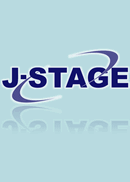Volume 27, Issue 2
Displaying 1-17 of 17 articles from this issue
- |<
- <
- 1
- >
- >|
Original Articles
-
2016 Volume 27 Issue 2 Pages 215-224
Published: 2016
Released on J-STAGE: July 29, 2016
Download PDF (5852K) -
2016 Volume 27 Issue 2 Pages 225-233
Published: 2016
Released on J-STAGE: July 29, 2016
Download PDF (2973K) -
2016 Volume 27 Issue 2 Pages 235-241
Published: 2016
Released on J-STAGE: July 29, 2016
Download PDF (3869K) -
2016 Volume 27 Issue 2 Pages 243-247
Published: 2016
Released on J-STAGE: July 29, 2016
Download PDF (3026K)
Symposium 2
-
2016 Volume 27 Issue 2 Pages 249-253
Published: 2016
Released on J-STAGE: July 29, 2016
Download PDF (3865K) -
2016 Volume 27 Issue 2 Pages 255-258
Published: 2016
Released on J-STAGE: July 29, 2016
Download PDF (2927K) -
2016 Volume 27 Issue 2 Pages 259-263
Published: 2016
Released on J-STAGE: July 29, 2016
Download PDF (3644K) -
2016 Volume 27 Issue 2 Pages 265-269
Published: 2016
Released on J-STAGE: July 29, 2016
Download PDF (3889K) -
2016 Volume 27 Issue 2 Pages 271-275
Published: 2016
Released on J-STAGE: July 29, 2016
Download PDF (3562K) -
2016 Volume 27 Issue 2 Pages 277-280
Published: 2016
Released on J-STAGE: July 29, 2016
Download PDF (2954K)
Symposium 5
-
2016 Volume 27 Issue 2 Pages 281-286
Published: 2016
Released on J-STAGE: July 29, 2016
Download PDF (3381K) -
2016 Volume 27 Issue 2 Pages 287-291
Published: 2016
Released on J-STAGE: July 29, 2016
Download PDF (6000K) -
2016 Volume 27 Issue 2 Pages 293-297
Published: 2016
Released on J-STAGE: July 29, 2016
Download PDF (3004K)
Articles by New Councilor
-
2016 Volume 27 Issue 2 Pages 299-302
Published: 2016
Released on J-STAGE: July 29, 2016
Download PDF (2931K) -
2016 Volume 27 Issue 2 Pages 303-306
Published: 2016
Released on J-STAGE: July 29, 2016
Download PDF (2973K) -
2016 Volume 27 Issue 2 Pages 307-312
Published: 2016
Released on J-STAGE: July 29, 2016
Download PDF (3785K) -
2016 Volume 27 Issue 2 Pages 313-317
Published: 2016
Released on J-STAGE: July 29, 2016
Download PDF (3277K)
- |<
- <
- 1
- >
- >|
